Is mozzarella soft cheese
Can You Eat Mozzarella in Pregnancy? Isn’t It a Soft Cheese?
If you’re a cheese lover, the recommendation to avoid certain soft cheeses during pregnancy may feel downright demoralizing. No mold-ripened Roquefort, no fresh Camembert, no imported gorgonzola? What’s a cheese-ophile to do?
With some soft cheeses a no-go for 9 months, you may wonder if you can drown your sorrows in some stretchy mozzarella — only to hear buzz that fresh mozz might also be unsafe in pregnancy.
Fortunately, there’s good news about your favorite pizza cheese. As long as it’s made from pasteurized milk, mozzarella (even the softer fresh variety) is almost universally safe for you to eat while pregnant.
Keep reading for the lowdown on including it in your diet during pregnancy.
Remember your science lesson about pasteurization from way back when? Pasteurization is a process of heating foods — dairy products in particular — to temperatures high enough to kill pathogens.
Because pasteurization virtually eliminates harmful bacteria, mozzarella made from pasteurized milk is fine to consume during pregnancy, both cooked and in its fresh, uncooked form.
Read food labels carefully to be sure any mozzarella you purchase is made with pasteurized milk. Or, if dining out, don’t be afraid to ask questions about the origins of the cheese in your pasta or salad.
If it’s been pasteurized, you’re good to dig in.
Choosing pasteurized mozzarella is critical because the risks of eating soft cheese in pregnancy come down to one offending bacteria in particular: listeria. When unpasteurized or raw milk is used to make soft cheeses, listeria has more opportunity to grow and potentially cause infection.
According to the Centers for Disease Control and Prevention (CDC), listeriosis (the bacterial infection caused by listeria) is especially serious in pregnancy.
When you’re pregnant, you’re 10 times more likely than other people to get a listeria infection, and the infection can spread to babies in utero. Serious complications can result, including miscarriage, stillbirth, preterm labor, and even death in newborns.
Beyond concerns of pasteurization, use your senses to assess the safety of any questionable cheese (you know, the hunk that’s been sitting in your fridge for ages).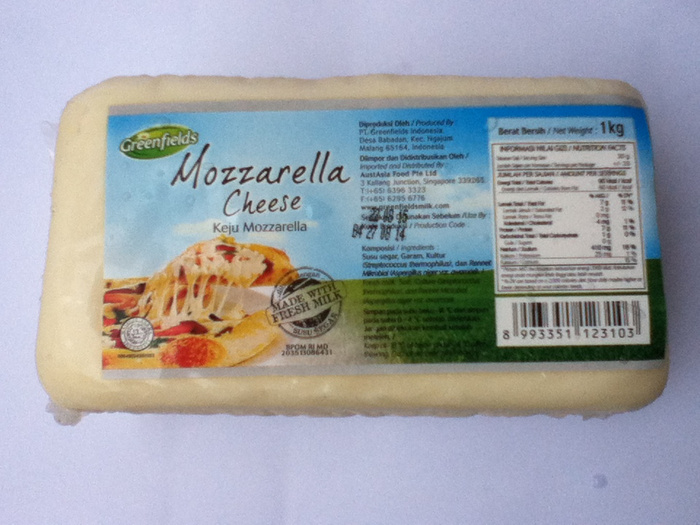
If the mozzarella has a foul odor or any visible mold, don’t eat it. Especially during pregnancy, it’s smart to follow the old food spoilage adage: When in doubt, throw it out.
Believe it or not, the list of soft cheese to avoid during pregnancy is actually pretty short.
As long as cheese isn’t mold-ripened and is made with pasteurized milk, you’re in the clear to enjoy tons of delicious cheeses, including the following:
- feta
- ricotta and cottage cheese
- cream cheese
- paneer
- havarti
- halloumi
- Parmesan
- pecorino
- Romano
- cheddar
- Swiss
We don’t typically think of cheese as a health food, but mozzarella actually provides a number of nutritional benefits.
For one thing, its star nutrient, calcium, is a key player in bone health. Your body also funnels calcium to your unborn baby, helping them grow bones and teeth.
It’s recommended that if you’re over the age of 18, you should consume 1,000 milligrams (mg) of calcium per day during pregnancy.
Teens who are pregnant need 1,300 mg per day. With 200 mg per 1-ounce serving, mozzarella can provide a substantial chunk of this mineral.
Mozzarella also shines in its high protein content of 7 grams (g) per 1-ounce serving.
While the current recommended dietary allowance for protein is just 0.8 g per kilogram (kg) body weight (0.35 grams per pound or g/lb), you need more protein when pregnant.
Researchers suggest about 1.2 g of protein per 1 kg body weight (0.54 g/lb) during early pregnancy and about 1.5 g/kg (0.68 g/lb) during the later stages of pregnancy.
A serving of mozz will contribute to protein’s many functions during pregnancy, including creating breast and uterine tissue, increasing your blood supply, and promoting the growth of your baby’s brain.
As cheeses go, mozzarella is a relatively low-sodium option, with approximately 7 percent of your daily value per ounce. If you’re on a low-sodium diet due to preeclampsia or other concerns, a bit of the stretchy stuff can be a smart choice for satisfying that cheese craving.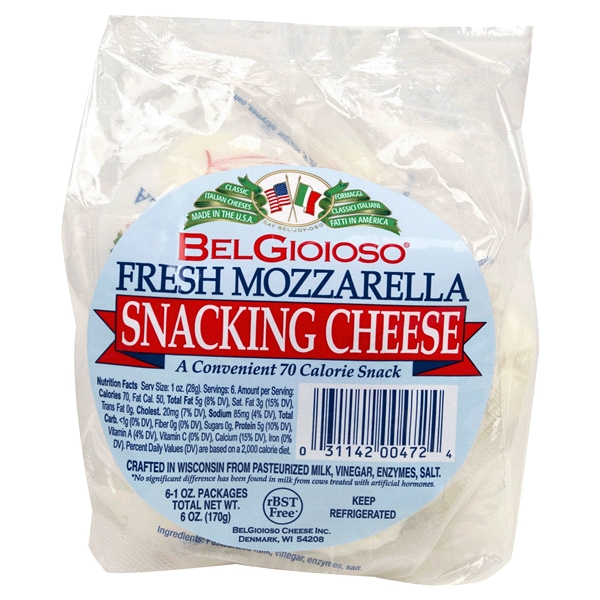
Meanwhile, as a nutrient-dense food, mozzarella is an easy go-to for fulfilling your extra calorie allotment during the second and third trimesters of pregnancy.
And as that stick of string cheese fuels your own healthy weight gain, it might help your baby’s, too.
Studies from 2012 and 2019 showed a positive association between milk and dairy consumption during pregnancy and greater infant birth weight and length.
Like all full-fat dairy, cheese does have more than its fair share of saturated fat.
Whole milk mozzarella contains 4 g of saturated fat per ounce (about 20 percent of the daily value), and even part-skim mozzarella contains 3 g (16 percent of the daily value) per 1-oz serving.
Since saturated fat has been associated with health issues like heart disease and weight gain, you may have concerns about this cheese’s healthfulness. But keep in mind that you need healthy fat sources like cheese during pregnancy.
And intriguingly, some studies have indicated that not all saturated fat is created equal.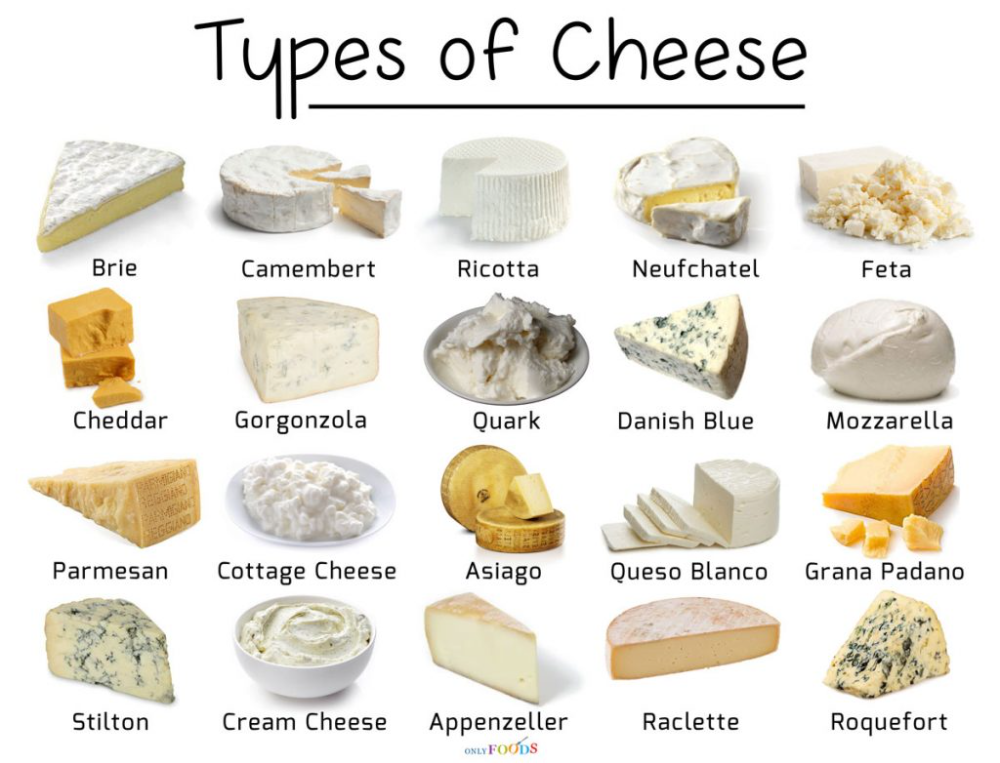 Recent research indicates that whole foods like cheese may have protective health effects, despite their saturated fat content.
Recent research indicates that whole foods like cheese may have protective health effects, despite their saturated fat content.
One 3-week study found that full-fat dairy foods didn’t adversely affect blood cholesterol, glucose, or insulin levels. (Note that this study was funded by the Danish Dairy Research Foundation.)
Another study even showed that eating more cheese led to reduced risk of cardiovascular disease.
As always, talk to your doctor if you have concerns about your diet during pregnancy.
Adding a bit of mozzarella to your pregnancy diet is simple! Try these healthy, low-prep snacks:
- Pair mozzarella slices with a handful of whole wheat crackers or a piece of fresh fruit.
- Make a caprese salad by drizzling balsamic vinegar over sliced mozzarella, tomatoes, and basil leaves.
- Spread marinara sauce on a whole wheat English muffin half. Sprinkle with shredded mozzarella and bake at 400 degrees for 8–10 minutes — you have yourself an easy pizza!
With all the foods off the menu during pregnancy, isn’t it nice to know you can still enjoy the gooey stretch and salty flavor of mozzarella?
Opt for cheese made with pasteurized milk and you’re in the clear to enjoy this savory favorite in pizza, pasta, and cheesy dips.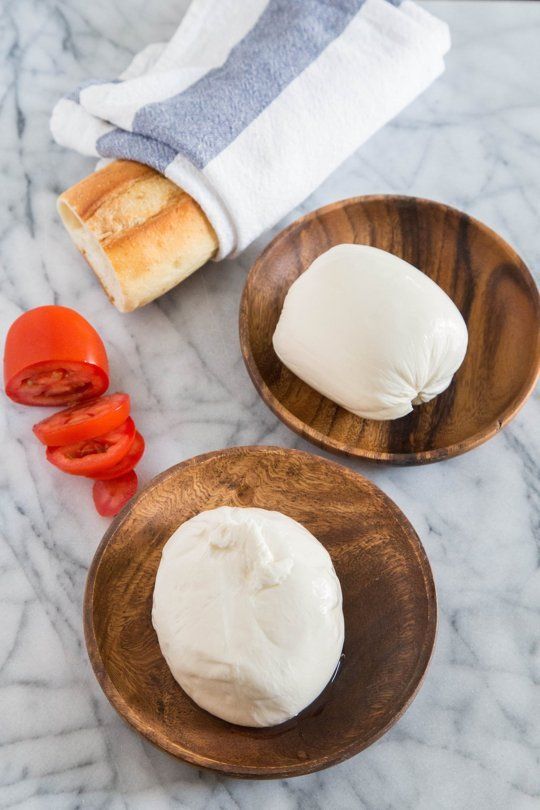
Can You Eat Mozzarella in Pregnancy? Isn’t It a Soft Cheese?
If you’re a cheese lover, the recommendation to avoid certain soft cheeses during pregnancy may feel downright demoralizing. No mold-ripened Roquefort, no fresh Camembert, no imported gorgonzola? What’s a cheese-ophile to do?
With some soft cheeses a no-go for 9 months, you may wonder if you can drown your sorrows in some stretchy mozzarella — only to hear buzz that fresh mozz might also be unsafe in pregnancy.
Fortunately, there’s good news about your favorite pizza cheese. As long as it’s made from pasteurized milk, mozzarella (even the softer fresh variety) is almost universally safe for you to eat while pregnant.
Keep reading for the lowdown on including it in your diet during pregnancy.
Remember your science lesson about pasteurization from way back when? Pasteurization is a process of heating foods — dairy products in particular — to temperatures high enough to kill pathogens.
Because pasteurization virtually eliminates harmful bacteria, mozzarella made from pasteurized milk is fine to consume during pregnancy, both cooked and in its fresh, uncooked form.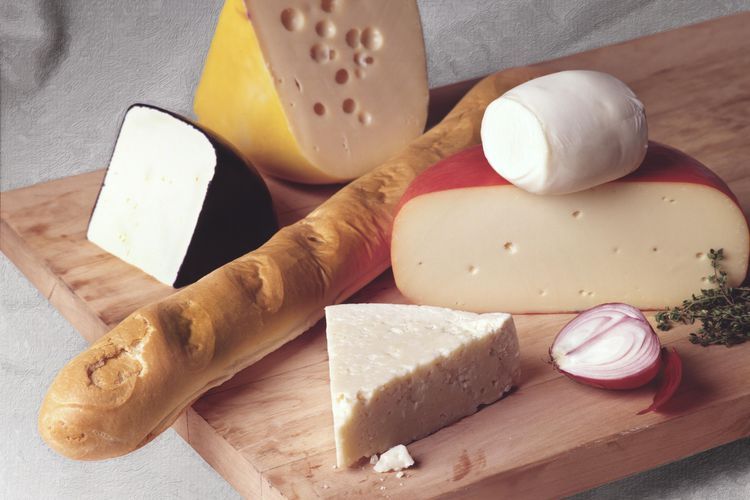
Read food labels carefully to be sure any mozzarella you purchase is made with pasteurized milk. Or, if dining out, don’t be afraid to ask questions about the origins of the cheese in your pasta or salad.
If it’s been pasteurized, you’re good to dig in.
Choosing pasteurized mozzarella is critical because the risks of eating soft cheese in pregnancy come down to one offending bacteria in particular: listeria. When unpasteurized or raw milk is used to make soft cheeses, listeria has more opportunity to grow and potentially cause infection.
According to the Centers for Disease Control and Prevention (CDC), listeriosis (the bacterial infection caused by listeria) is especially serious in pregnancy.
When you’re pregnant, you’re 10 times more likely than other people to get a listeria infection, and the infection can spread to babies in utero. Serious complications can result, including miscarriage, stillbirth, preterm labor, and even death in newborns.
Beyond concerns of pasteurization, use your senses to assess the safety of any questionable cheese (you know, the hunk that’s been sitting in your fridge for ages).
If the mozzarella has a foul odor or any visible mold, don’t eat it. Especially during pregnancy, it’s smart to follow the old food spoilage adage: When in doubt, throw it out.
Believe it or not, the list of soft cheese to avoid during pregnancy is actually pretty short.
As long as cheese isn’t mold-ripened and is made with pasteurized milk, you’re in the clear to enjoy tons of delicious cheeses, including the following:
- feta
- ricotta and cottage cheese
- cream cheese
- paneer
- havarti
- halloumi
- Parmesan
- pecorino
- Romano
- cheddar
- Swiss
We don’t typically think of cheese as a health food, but mozzarella actually provides a number of nutritional benefits.
For one thing, its star nutrient, calcium, is a key player in bone health. Your body also funnels calcium to your unborn baby, helping them grow bones and teeth.
It’s recommended that if you’re over the age of 18, you should consume 1,000 milligrams (mg) of calcium per day during pregnancy.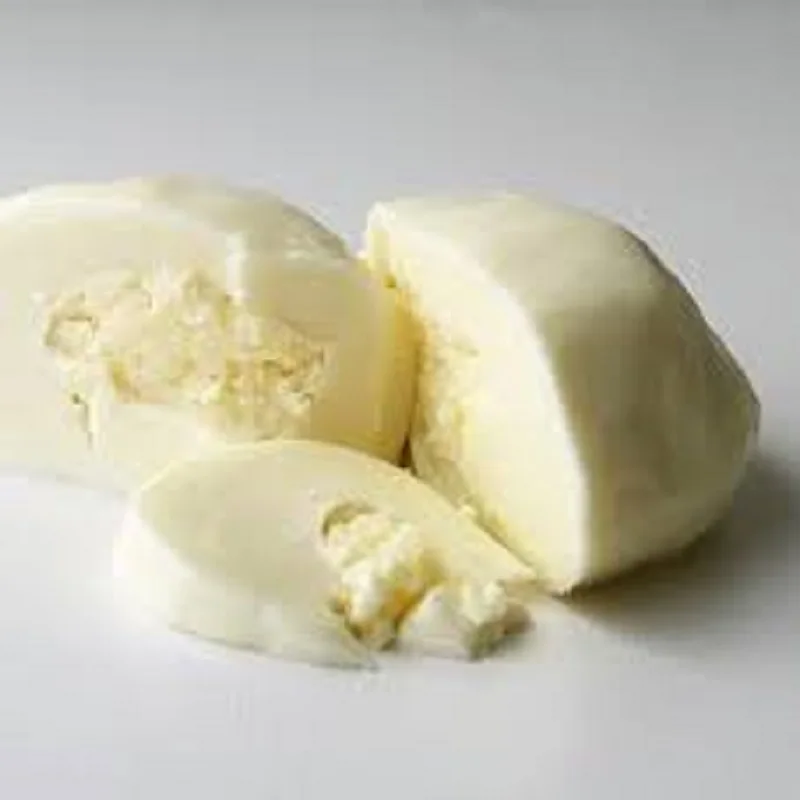
Teens who are pregnant need 1,300 mg per day. With 200 mg per 1-ounce serving, mozzarella can provide a substantial chunk of this mineral.
Mozzarella also shines in its high protein content of 7 grams (g) per 1-ounce serving.
While the current recommended dietary allowance for protein is just 0.8 g per kilogram (kg) body weight (0.35 grams per pound or g/lb), you need more protein when pregnant.
Researchers suggest about 1.2 g of protein per 1 kg body weight (0.54 g/lb) during early pregnancy and about 1.5 g/kg (0.68 g/lb) during the later stages of pregnancy.
A serving of mozz will contribute to protein’s many functions during pregnancy, including creating breast and uterine tissue, increasing your blood supply, and promoting the growth of your baby’s brain.
As cheeses go, mozzarella is a relatively low-sodium option, with approximately 7 percent of your daily value per ounce. If you’re on a low-sodium diet due to preeclampsia or other concerns, a bit of the stretchy stuff can be a smart choice for satisfying that cheese craving.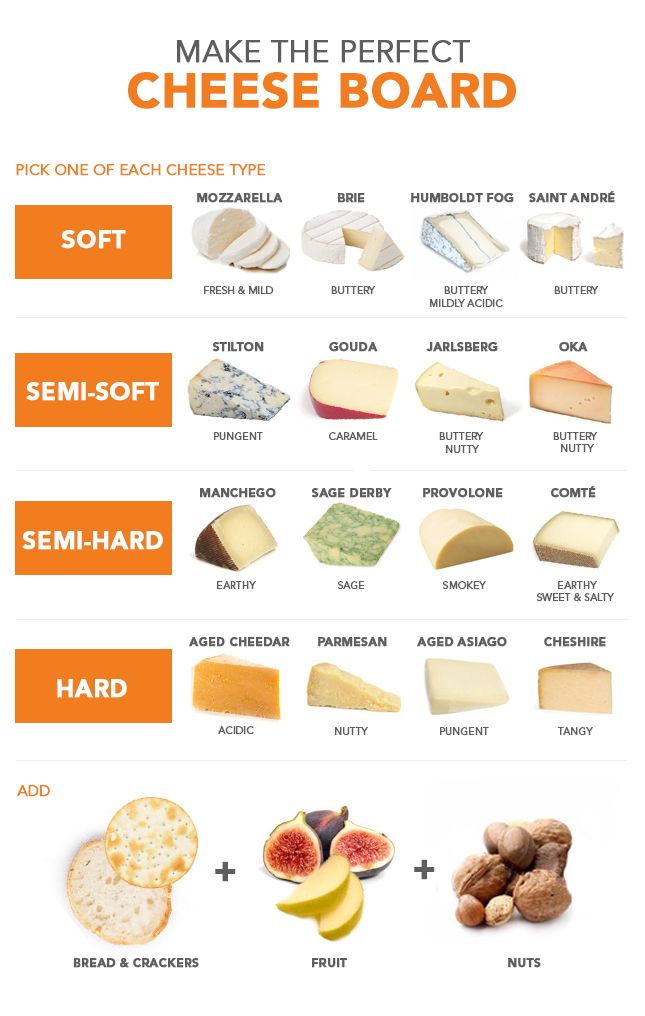
Meanwhile, as a nutrient-dense food, mozzarella is an easy go-to for fulfilling your extra calorie allotment during the second and third trimesters of pregnancy.
And as that stick of string cheese fuels your own healthy weight gain, it might help your baby’s, too.
Studies from 2012 and 2019 showed a positive association between milk and dairy consumption during pregnancy and greater infant birth weight and length.
Like all full-fat dairy, cheese does have more than its fair share of saturated fat.
Whole milk mozzarella contains 4 g of saturated fat per ounce (about 20 percent of the daily value), and even part-skim mozzarella contains 3 g (16 percent of the daily value) per 1-oz serving.
Since saturated fat has been associated with health issues like heart disease and weight gain, you may have concerns about this cheese’s healthfulness. But keep in mind that you need healthy fat sources like cheese during pregnancy.
And intriguingly, some studies have indicated that not all saturated fat is created equal. Recent research indicates that whole foods like cheese may have protective health effects, despite their saturated fat content.
Recent research indicates that whole foods like cheese may have protective health effects, despite their saturated fat content.
One 3-week study found that full-fat dairy foods didn’t adversely affect blood cholesterol, glucose, or insulin levels. (Note that this study was funded by the Danish Dairy Research Foundation.)
Another study even showed that eating more cheese led to reduced risk of cardiovascular disease.
As always, talk to your doctor if you have concerns about your diet during pregnancy.
Adding a bit of mozzarella to your pregnancy diet is simple! Try these healthy, low-prep snacks:
- Pair mozzarella slices with a handful of whole wheat crackers or a piece of fresh fruit.
- Make a caprese salad by drizzling balsamic vinegar over sliced mozzarella, tomatoes, and basil leaves.
- Spread marinara sauce on a whole wheat English muffin half. Sprinkle with shredded mozzarella and bake at 400 degrees for 8–10 minutes — you have yourself an easy pizza!
With all the foods off the menu during pregnancy, isn’t it nice to know you can still enjoy the gooey stretch and salty flavor of mozzarella?
Opt for cheese made with pasteurized milk and you’re in the clear to enjoy this savory favorite in pizza, pasta, and cheesy dips.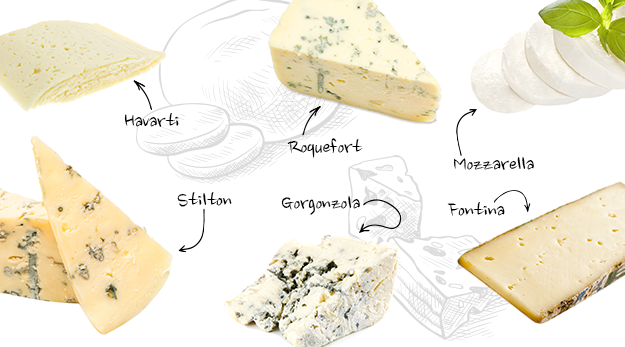
Types of pickled cheeses: mozzarella, stracciatella, feta, suluguni
e., the process of making mozzarella cheese is described: “Polyphemus milked goats and sheep, as is customary for everyone. Bely took half of the milk, instantly fermented it, immediately squeezed it out and put it into tightly woven baskets ... ". This once again proves that humanity has long been familiar with such a product as soft young cheese. The Bedouins of the Ancient East, who transported milk in bags from veal stomachs, found by the end of the journey that due to heat, shaking and the active work of enzymes, it turned into a dense white mass, amazingly tasty.
Mozzarella is an indispensable cheese in Italian cuisine
It turns out that mozzarella is soft milk that is not drunk, but eaten. This variety is classified as a brine cheese, as it ripens and is stored in brine and does not have the usual hard rind. Soft Italian cheese is made from buffalo or cow's milk. It’s hard to imagine salads, casseroles, lasagna, calzone pie, caprese appetizer and pizza without tender mozzarella, because mozzarella stretches very well when warm. Mozzarella is prepared by fermenting milk with a thermophilic lactic acid culture, adding rennet, after which the mixture is heated until whey is separated. The resulting elastic base for cheese is kneaded until an elastic mass is obtained, balls are rolled up and placed in a cold brine.
Mozzarella is prepared by fermenting milk with a thermophilic lactic acid culture, adding rennet, after which the mixture is heated until whey is separated. The resulting elastic base for cheese is kneaded until an elastic mass is obtained, balls are rolled up and placed in a cold brine.
There are different types of mozzarella. Large balls are called bocconcini, cherry-sized balls are called chileggini, tiny peas resembling pearls are perlini cheese. And sometimes mozzarella is woven in the form of a pigtail - this is trachcha. Small balls are usually sold in brine, where they float freely.
Mozzarella has a thin, shiny and smooth skin, a slightly layered creamy structure, a milky aroma, and it tastes very pleasant, although fresh, but it blends perfectly with other products without interrupting their taste.
Mozzarella is a popular cheese in Russia, and in the store you can find it not only in the form of balls, but also formed into rolls stuffed with sun-dried tomatoes and olives.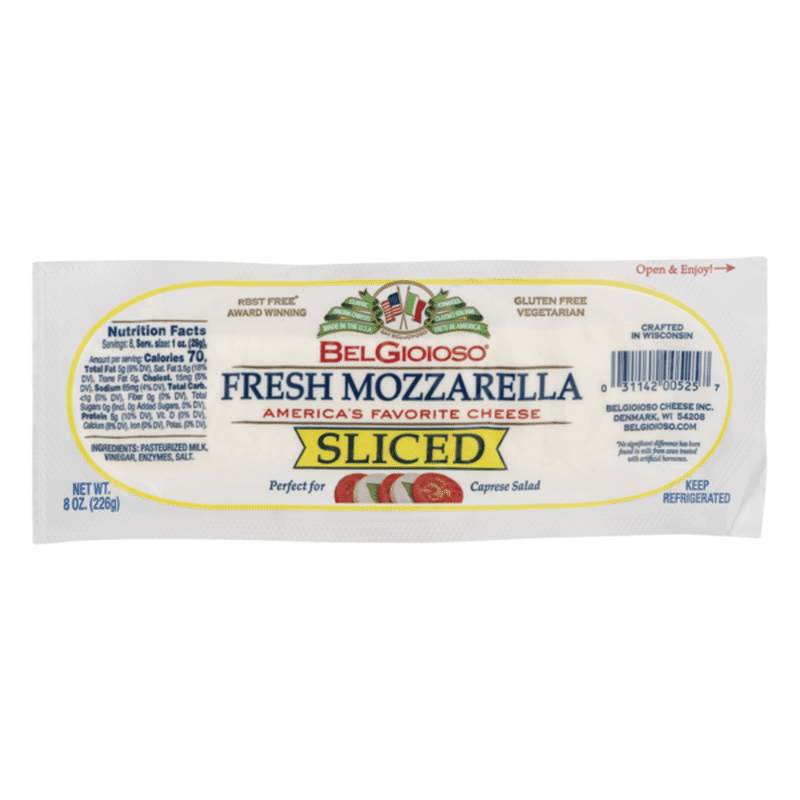 In Italy, mozzarella stuffed with Parma ham and prosciutto is one of the favorite varieties.
In Italy, mozzarella stuffed with Parma ham and prosciutto is one of the favorite varieties.
By the way, a little secret - mozzarella should not be heated for too long, as it dries out and becomes tasteless, so it is better to add it to pizza at the very end of cooking. Also, mozzarella is not frozen, otherwise it turns into a curd mass. Store it for 48 hours, and hard varieties of mozzarella - up to four days.
Caprese from the island of Capri
This appetizer is the same color as the Italian flag and is considered the Italian national dish. You will need soft mozzarella cheese, juicy and tasty tomatoes, fresh basil, quality olive oil, black pepper and salt. To prepare this dish, the inhabitants of Capri take real Italian buffalo cheese, bull's-heart tomatoes and olive oil with a delicate taste, without bitterness.
Arrange the tomato slices on a flat plate, garnish each with a mozzarella ball and cover with a basil leaf. Drizzle it all with olive oil, salt and pepper and serve caprese with dry wine.
How many types of mozzarella do you know?
It seems that mozzarella is prepared according to one recipe, but there are several varieties of this cheese. Mozzarella di Bufala is a classic mozzarella made exclusively from buffalo milk. Such cheese is very expensive and rarely appears in stores, most often it is brought to order in fashionable restaurants directly from Italy.
Cheese production in Russia has now risen to a higher level, but despite this, we cannot find such a variety. If you see the inscription “Mozzarella di Bufala” on the package and its cost is quite affordable, and the expiration date is long enough, then this is not Buffalo.
Mozzarella fior di latte differs from Buffalo only in that it is made from cow's milk. Only an experienced gourmet will notice the subtleties of taste differences, but this cheese is also produced only in Italy.
Mozzarella solido is a cheese destined for worldwide shipping. It is packed in a thermal bag and therefore can be stored for a long time. Mozzarella trecce and Mozzarella nodini are mozzarella braided or knotted. Smoked mozzarella is called Mozzarella affumicata, and mozzarella with a dense structure is called Mozzarella Galbani. This is what is used to make pizza. Mozzarella Unagrande is a Russian version of Italian cheese that has a very competitive price and an acceptable shelf life.
Burrata: mozzarella with a surprise
Burrata is a rather young cheese, since it was made a hundred years ago. Cheese makers attribute it to one of the types of pickled cheeses. Outwardly, the burrata looks like a ball of mozzarella, in which a delicate creamy filling is hidden. The method of making this cheese is similar to the technology of making mozzarella, only a bag is made from each ball and filled with cream and pieces of cheese. The balls are wrapped in asphodel or banana leaves, and then a bag is tied, the weight of which is 250–500 g. The cheese ripens in the leaves and acquires a greenish tint. Before use, burrata must be taken out of the refrigerator so that the cheese reaches room temperature: this maximizes its creamy taste and aroma.
In Italy, burrata is also added to pizza, but before cooking, so that it does not acquire a watery texture. This cheese is also good for Greek salad. Burrata is also eaten on its own, sprinkled with salt, pepper and sprinkled with olive oil. Burrata is served with fresh and cooked vegetables, tomatoes, boiled eggs and fresh homemade bread. This kind of cheese goes well with fruits, nuts and honey. You should not season burrata with some bright spices, so as not to drown out its delicate and refined taste.
Before serving, cut the cheese head in half, drizzle with olive oil and balsamic vinegar, then top with chopped fresh tomatoes. Sandwiches and toasts with burrata are very tasty - when the filling is spread over bread and sprinkled with herbs on top.
Strawberry Burrata Salad
Cover a plate with spinach and lettuce. Top with 200 g of quartered strawberries and slices of burrata - one cheese head is enough for a salad.
For the sauce, mix 2 tbsp. l. any nut butter, 1 tbsp. l. balsamic vinegar and a small shallot, which must first be finely chopped. Pepper the sauce, pour over the salad and garnish with pine nuts.
Stracciatella: cheese strands in cream
What could be tastier than stracciatella - soft Italian cheese, which is cheese strands filled with thick cream! This cheese is quite easy to prepare. Mozzarella, cut into halves, is immersed in a brine heated to 80 ° C, and after a minute cheese strands are pulled out of it, which are immediately lowered into chilled cream.
Stracciatella is served with vegetables and fruits, but the Italians, among other things, make mouth-watering soups from it, spread it on bruschetta, add it to vegetable and fruit salads. A favorite Italian appetizer is stracciatella, arugula, tomatoes, olive oil and black pepper. If you serve cheese with thinly sliced ham and melon cubes, you get an exquisite delicacy. Stracciatella pairs perfectly with flat pappardelle pasta, and if you season the dish with an interesting sauce, you get a real delicious meal!
Green risotto with stracciatella
Sauté garlic clove, finely chopped shallot and thyme sprig in olive oil. Add 240g arborio rice and fry it lightly. Pour 100 ml of dry white wine into the rice and let it evaporate with constant stirring. Then pour in a little chicken broth and cook again, stirring, until the liquid has completely evaporated. Pour in 700 ml of broth in small portions.
Salt and pepper the rice, remove from heat, add 60 g butter and 100 g chopped parmesan. Stir the risotto until creamy. Grind in a blender 200 g of fresh spinach, 50 g of basil and the same amount of parsley. If necessary, add a little water while beating. Add green puree to risotto.
Remove the garlic and thyme from the dish, put 100 g stracciatella in a saucepan, stir quickly to prevent it from melting, and arrange on plates. Top the risotto with the remaining stracciatella, drizzle with olive oil and pepper.
Feta, brynza and suluguni: “brothers in mind” of mozzarella
Full screen
What other pickled cheeses are there? This group also includes feta, cheese and suluguni. Greek feta cheese is made from sheep's and goat's milk, it is a loose and crumbly cheese in texture with a pleasant cottage cheese smell. It cannot be thinly sliced or spread on bread, as it crumbles a lot. Feta is made from curdled milk, which is first filtered and separated from the whey, and then hung in linen bags to completely remove moisture. After that, the cheese is laid out in molds and covered with salt or poured with brine, leaving to ripen from 2 weeks to 2-3 months. Feta is also stored in brine, but in the highlands it is customary to keep it in olive oil. Feta is traditionally added to a Greek salad, although this cheese goes well with any vegetable and herb, especially olive oil dressing.
Cheese is made from any milk, including buffalo, fermented with rennet. After that, the curd mass is laid out under a press, cut into pieces and soaked in brine or marinade. Cheese is good in salads, pies and rolls, with meat, fish, eggs, vegetables, cereals, legumes and fruits. Delicious cheese with sour cream and fresh bread. To reduce the saltiness of the cheese, you can soak it for a couple of minutes in boiling water.
Suluguni is a pickled Georgian cheese with a layered texture and a pleasant salty taste. The first stage of its preparation is like cheese, but after pressing, suluguni is cut into bundles and melted at a temperature of 80 ° C. After that, a homogeneous mass is laid out in molds, immersed in cold water to solidify and transferred to other molds with salt. After the final molding, the cheese is kept in brine for impregnation. Young suluguni is ready in 2 days, and aged - in 30–45 days.
It is a versatile cheese that can be eaten fresh, fried, smoked, added to salads, soups, omelettes, casseroles, pies, meat and vegetable dishes. Without suluguni, one cannot cook khachapuri, Ossetian pies and khychins. It is also a great appetizer for wine, especially if you serve cheese with tomatoes, bell peppers and herbs.
It's nice that Russian cheese makers produce analogues of the favorite cheeses. Thanks to this, we can expand our culinary horizons and have more fun with food!
Mozzarella cheese - description, benefits and harms, calories, cooking methods.
Bakery
Lazy achma with Adyghe cheese
Main dishes
Baked mackerel with bacon and lecho
Main dishes
Caprese
Main dishes
Timballo
1 hour
tagliatelle —
600 g
garlic —
2 teeth
bulb onions —
1 pc.
tomato sauce
pork sausages —
150 g
dry red wine —
150 ml
pureed tomatoes —
680 g
mozzarella cheese —
300 g
parmesan cheese -
100 g
black pepper
olive oil
basil
Bakery
Stromboli pizza roll
1 hour
wheat flour —
500 g
dry yeast —
7 g
salt —
0. 5 st. l.
sugar —
0.5 st. l.
water —
340 g
wheat flour
butter
tomatoes in own juice —
400 g
ground beef —
400 g
mozzarella cheese —
200 g
italian herb blend
olive oil
thyme
Bakery
Chrysanthemum meat pie
1 hour
kefir —
200 ml
vegetable oil -
120 ml
salt —
10 g
sugar —
30 g
dry yeast —
11 g
flour —
450 g
mozzarella cheese -
100 g
ground meat —
200 g
squirrels —
1 pc.
bulb onions —
0.5 pcs.
ground sweet paprika
oregano
coriander
black pepper
Bakery
Snack bread
1 hour
milk —
500 ml
flour —
590 g
sugar -
60 g
yeast —
10 g
salt —
10 g
milk powder —
20 g
egg —
1 pc.
butter -
150 g
mozzarella cheese —
100 g
bacon —
100 g
parsley
garlic —
4 teeth
Dessert
Pancakes with mussels
1 hour
egg —
1 pc.
sugar —
2 pinches
milk —
400 ml
vegetable oil —
1 st.












